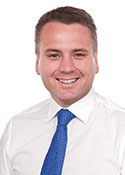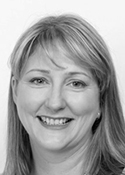Mayo
Margin: Liberal 12.5%
Region: Outer Adelaide, South Australia
In a nutshell: The seat formerly held by Alexander Downer is widely rated as the strongest propect for the Nick Xenophon Team, particularly in light of the recent difficulties of Liberal member Jamie Briggs.
Candidates in ballot paper order

|
GLEN DALLIMORE REBEKHA SHARKIE LUKE DZIVINSKI NATHAN DANIELL JAMIE BRIGGS BRUCE HICKS |
Based around the Adelaide Hills, Fleurieu Peninsula and Kangaroo Island, Mayo was created with the expansion of parliament in 1984 from territory which had mostly been covered by Barker, which was compensated for its losses by absorbing the Riverland from the abolished seat of Angas. It presently extends southwards from Kersbrook, 22 kilometres to the north-east of Adelaide, through Mount Barker and McLaren Vale to Goolwa at the mouth of the Murray River, and westwards to the Fleurieu Peninsula and Kangaroo Island. All areas concerned are traditionally conservative, with Labor never having held Mayo, Barker or Angas. However, the Liberals’ hold on the seat was threatened by the Australian Democrats in 1998 and the Greens at the by-election held after Alexander Downer’s retirement in 2008, and it is widely reckoned that Downer’s successor, Jamie Briggs, faces a serious threat at the coming election from the Nick Xenophon Team.
Alexander Downer entered parliament as Mayo’s inaugural member in 1984, his father Sir Alec Downer having been member for Angas from 1949 to 1963. The only threat to Downer’s hold on the seat over the next 24 years was the strength of the Australian Democrats in the Adelaide Hills, which became a live concern in 1998 when John Schumann, former lead singer of folk group Redgum (of “I Was Only Nineteen” fame), outpolled Labor and came within 1.7% of overhauling Downer on their preferences. The Democrats polled a more typical 14.8% in 2001, before collapsing to 1.8% in 2004. As well as bringing an end his 11-year career as Foreign Minister, the November 2007 election reduced Downer’s margin against Labor to single figures for the first time, following a swing of 6.5%. Downer stepped down from the front bench after the election defeat and announced his resignation from parliament the following July, initiating a by-election held in September.
The Liberal preselection was won by Jamie Briggs, who had worked in the Prime Minister’s Office as chief adviser on industrial relations, giving him a politically uncomfortable association with the unpopular WorkChoices policies. With the backing of Downer and John Howard, Briggs won the preselection vote in the seventh round ahead of the party’s recently ousted state leader, Iain Evans. Among the preselection also-rans was housing mogul Bob Day, who reacted to his defeat by running as the candidate of Family First, for which he would eventually be elected a Senator in 2013. Labor did not contest the by-election, but Briggs was run close by Lynton Vonow of the Greens and independent Di Bell, a local anthropologist who had the backing of Nick Xenophon. With the Liberal vote falling from 51.1% to 41.3%, most of the remainder split between the Greens (21.4%), Di Bell (16.3%) and Bob Day (11.4%). The distribution of preferences from Day and others left Vonow leading Bell 28.2% to 24.1% at the second-last count, with Briggs finishing 3.0% clear of Vonow after distribution of Bell’s preferences.
There were no such difficulties for Briggs at the 2010 election, when his margin was almost identical to Downer’s in 2007, or in 2013, when it returned to double-digit territory after a 5.2% swing. Briggs won promotion to shadow parliamentary secretary in September 2012, and then to the outer ministry after the 2013 election victory as Assistant Minister for Infrastructure and Regional Development. He supported Tony Abbott during Malcolm Turnbull’s successful leadership challenge in September 2015, and it was Turnbull’s original intention to dump him to the back bench. However, Bruce Billson’s refusal to accept a demotion made the position of Cities and the Built Environment Minister available to him.
Briggs’ ministerial tenure came to end in December after it emerged that a DFAT official complained he behaved inappropriately towards her in a Hong Kong bar the previous month. His cause suffered further with the publication of a photo taken on the night, which Briggs had been circulating to colleagues with a view to defending himself from her claims, ultimately to the effect of allowing her to be identified. Briggs announced his resignation from the ministry on December 29, after being told by Malcolm Turnbull he had not met “expected standards of ministerial conduct”. This provided further encouragement to suggestions the seat might be won by the Nick Xenophon Team, who had enlisted the services of Rebekha Sharkie, who had worked in the electorate offices of state Liberal MPs Isobel Redmond and Rachel Sanderson, and had “briefly worked part-time” for Briggs himself.
 A poll conducted by ReachTEL for GetUp! on May 16, from a sample of 861, credited Jamie Briggs with 40.5% of the primary vote, against 25% for Rebekha Sharkie of the Nick Xenophon Team, 19.5% for Labor, and 11% for the Greens. This accorded with Nick Xenophon’s claim on the ABC’s Lateline in the first week of the campaign that Sharkie was polling in the twenties. The results suggest Briggs would be under serious threat from Sharkie, who would stand to receive an overwhelming flow of Labor and Greens preferences.
A poll conducted by ReachTEL for GetUp! on May 16, from a sample of 861, credited Jamie Briggs with 40.5% of the primary vote, against 25% for Rebekha Sharkie of the Nick Xenophon Team, 19.5% for Labor, and 11% for the Greens. This accorded with Nick Xenophon’s claim on the ABC’s Lateline in the first week of the campaign that Sharkie was polling in the twenties. The results suggest Briggs would be under serious threat from Sharkie, who would stand to receive an overwhelming flow of Labor and Greens preferences.
Analysis by William Bowe. Read William’s blog, The Poll Bludger.


